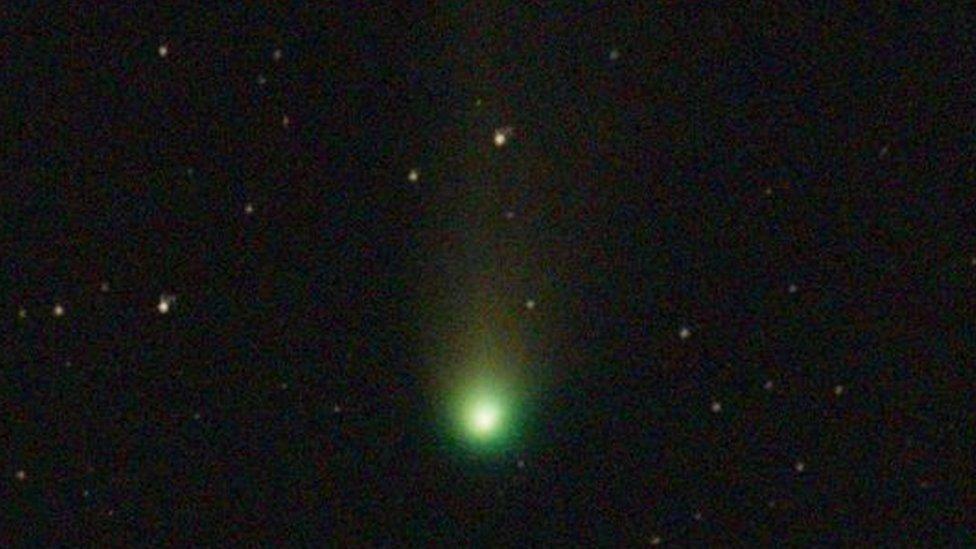12P/Pons-Brooks: When can you see the big, bright 'Mother of Dragons' comet?
- Published
- comments

The comet was spotted earlier this week in Derbyshire
Astronomers say that a rare "once-in-a-lifetime" comet can now be seen in the night sky in the UK.
Comet 12P/Pons-Brooks - which has been nicknamed the "Mother of Dragons" comet - only passes by the Earth every 71 years.
However, if you want to spot the huge green comet then you need to be quick!
It's only expected to be visible in the Northern Hemisphere until later this month.
What is the Mother of Dragons comet?
Comet 12P/Pons-Brooks was first spotted in 1812 and was named after the two people who first discovered it - French astronomer Jean-Louis Pons and British-American astronomer William Robert, who observed the comet's orbit.
The huge comet is bigger than Mount Everest and is made of dust and ice, which means it leaves a bright green tail behind it as it is heated by the Sun.
12P/Pons-Brooks is also known as the "Devil's Comet".
This is because it has a pointy shape at the front that looks like horns.
Comet 12P/Pons-Brooks has regular outbursts, which is when it suddenly releases dust and gas.
This is what makes the pointy horn shapes - and also what makes it easier to see in the sky.
Comets are are large objects formed from chunks of ice and dust.
As they pass by the Sun, the heat begins to melt the ice and dust - turning the water content from a solid to a gas - and creating a beautiful, bright tail trailing behind it.
Comet 12P/Pons-Brooks is extra special as it is classed as a cryovolcanic comet - meaning it has an icy volcano in it that erupts dust, gases and ice when pressure builds inside it as it is heated.
How can I spot the Mother of Dragons comet?
According to the European Space Agency, the comet will be visible in clear dark skies above the western horizon during the hours after dusk.
It may be possible to spot it without using binoculars, however you will have a better chance if you use them or a small telescope - as the comet's brightness can be unpredictable.
The comet is expected to be at its brightest on 21 April.
After that date, it will become less visible in the sky in the Northern Hemisphere as the days get longer.
But be warned - if you miss the comet this time, you'll have to wait until summer 2095 to catch it again.
- Published13 February 2023
- Published11 September 2023
